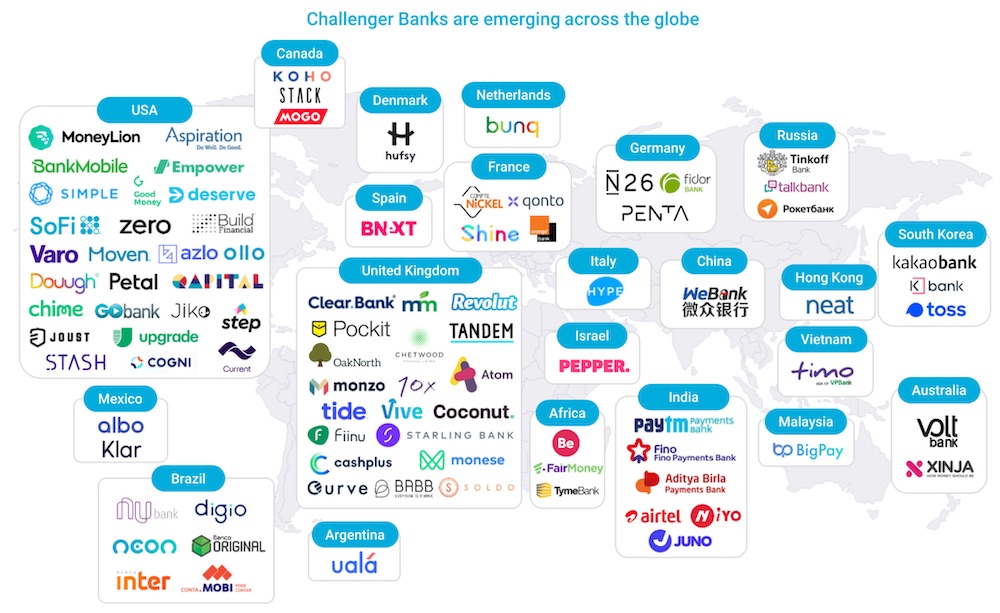Which neobanks will rise or fall?
The neobank, or digital bank, phenomenon continues to take the world by storm, with global winners, from Brazil's Nubank valued at $10 billion and Berlin's N26 valued at $3.5 billion, to Chime, now valued at $14.5 billion as the most valuable consumer fintech in the United States.
Neobanks have led the charge of the $3.6 billion in venture capital funding for consumer fintech startups this year. And as the coronavirus-fueled acceleration of digital transformation continues, it seems the digital bank is here to stay, with some estimates pointing to neobanks reaching 60 million customers in North America and Europe by the end of 2020, and surpassing 145 million by 2024.
The space is also becoming more crowded, a trend which will only accelerate with fintech eating the world and creating greater infrastructure that enables any company to include a bank account as a product extension.

FT Partners Fintech Industry Research, January 2020
As a result, neobanks are not a monolithic model and not all are created equal. Looking underneath the hood of business models across the globe reveals remarkable operational differences and highlights specific features that are more likely to succeed in the long-term.
Five global models of neobanksToday there are five distinct models that are leading globally:
Interchange-led: Relies on payments revenue, sourced through interchange as the revenue driver. Every time a customer uses the neobank's card as a payment method they get paid [e.g. Chime / US; Neon (hybrid of 1 & 2) / Brazil].
Credit-led: Leverages a credit-first model, starting off with a credit card or similar offering, and later providing a bank account [e.g. Nubank, Neon (hybrid of 1 & 2) / Brazil].